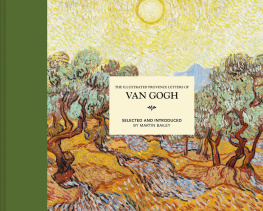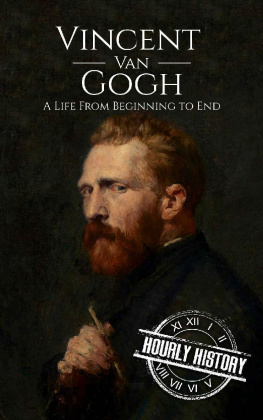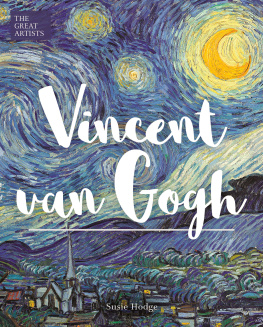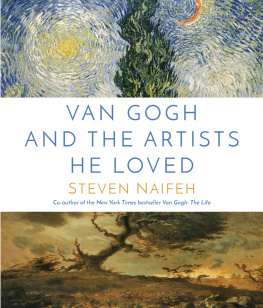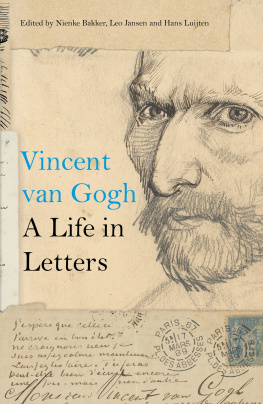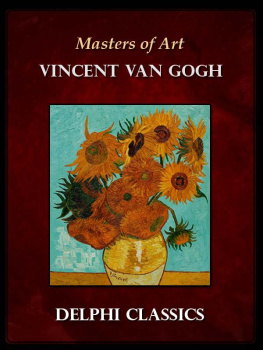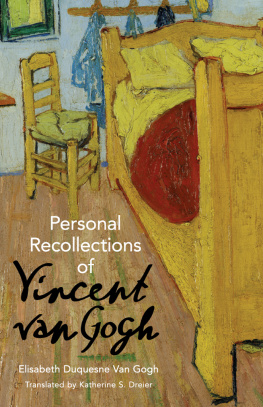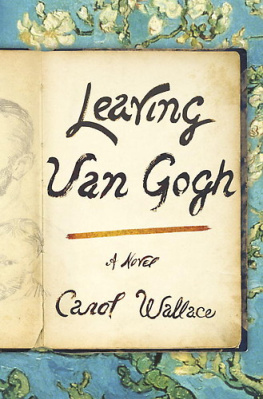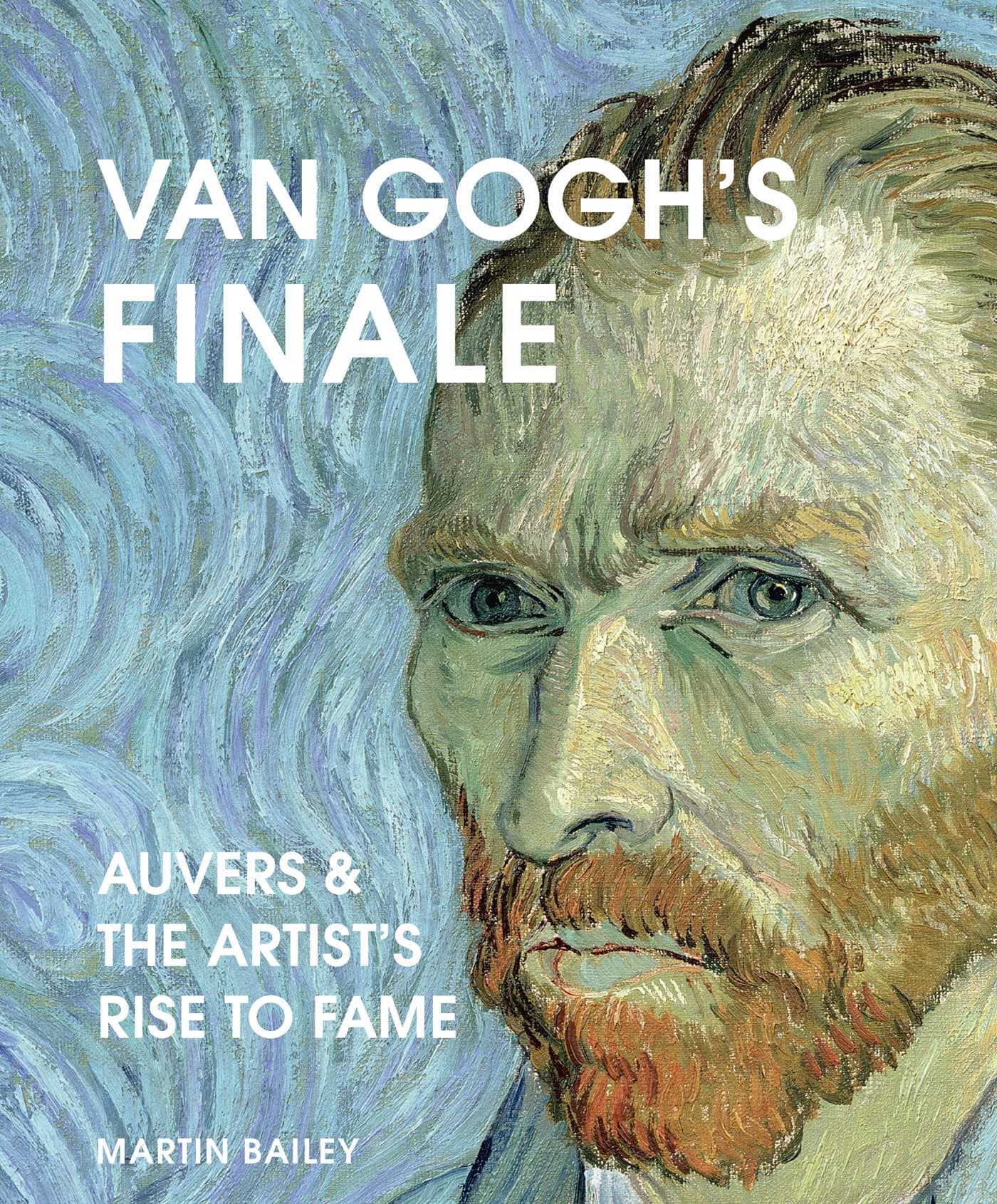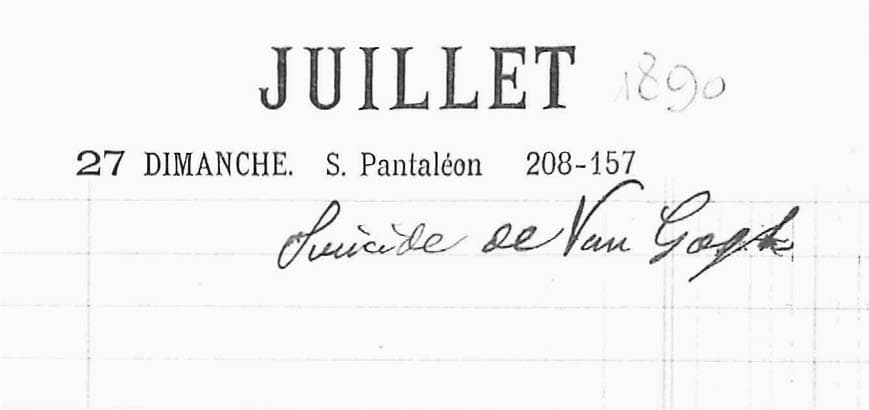fig. 2 Van Goghs room, Auberge Ravoux
fig. 3 Dr Gachets diary entry for 27 July 1890, Archive E. W. Kornfeld, Bern
Dominique-Charles Janssens, who acquired the auberge some 35 years ago, made a decision to keep the bedroom as a simple space: Visitors come and furnish the empty room with their own memories. They come not for Van Gogh the painter, but for the human being who suffered.
From the auberge, it is a 15-minute walk to the cemetery. The route along a back road first leads to the church an edifice () portrayed so gloriously by Van Gogh under a cobalt blue sky. Just beyond the church the road winds uphill a short distance, alongside the wheatfields that proved such an inspiration. It was just under a kilometre away, across these fields, that the fatal shot was fired.
For many the grave has become a place of pilgrimage (). Visitors flock to what is the most visited French cemetery after Pre Lachaise in Paris. It is an emotional experience to gaze at the simple headstones for Vincent and Theo, buried side by side and covered by a single blanket of ivy, one of the artists favourite plants. For some, the grave has a particularly deep personal meaning: a few people even bring a small quantity of the ashes of their departed loved ones to discreetly scatter into the ivy.
For me, the most memorable moment in my quest to explore Vincents final days was holding the gun that had ended his life. When I heard that the weapon was being put up for sale in 2019 I travelled to Paris just before its unveiling. I met the auctioneer Rmy Le Fur in his premises, which were crammed from floor to ceiling with objects coming up for sale, ranging from bric--brac to major artworks.
fig. 4 The corroded Lefaucheux revolver which probably killed Van Gogh, held in the hand of the author
Le Fur disappeared into a back room and brought out a white cardboard box. On opening the lid I saw the rusted Lefaucheux revolver resting incongruously in layers of pristine tissue paper. The late 19th-century gun was more severely corroded than I had expected, but this suggested that it had lain on the ground or just beneath the surface for decades. The wooden section of the grip was missing, having long since rotted away. Tellingly, the safety trigger was unlocked, so it had probably been fired shortly before being abandoned.
Picking up the rusted revolver I was instantly struck by how small and light it was (
Le Fur told me that in around 1960 an unnamed farmer had dug up the gun while ploughing a field on the outskirts of Auvers. It was now being sold by an anonymous owner. Months later I managed to track down details of the story and identify the original finder. He was Claude Aubert, a respected farmer who worked just beyond the northern wall of the chteau of Auvers.
Tradition has it that Van Goghs shooting took place at the back of the chteau and the gun had clearly lain there for decades. Aubert therefore quickly realized that this rusted revolver could indeed be the weapon that had killed the artist. It never occurred to him that the gun had any financial value and he gave it to his friends Roger and Micheline Tagliana, who ran the auberge where Van Gogh had once stayed. For them, it was merely a curio, occasionally brought out for friends or visitors with a special interest. Aubert died in 1989, having gained nothing financially and won no plaudits for his discovery, which suggests to me that he had been totally honest about the find.
The 1960 discovery went unpublicized and the weapon was later inherited by the innkeepers daughter, Rgine. For decades she kept it securely hidden in a drawer, before eventually deciding to sell it. By this time there was much more international interest in Van Gogh. Without the provenance the rusted gun would have been worth nothing, but with the Van Gogh connection Le Fur auctioned it on Rgine's behalf for 162,500, selling it to an anonymous buyer.
The emergence of the gun came during a long-running debate over the circumstances of Van Goghs death. Although it had always been widely assumed that it was suicide, two American writers argued in 2011 that a local teenager, Ren Secrtan, had pulled the trigger. Publication of the highly detailed biography, by Steven Naifeh and Gregory White Smith, caused a sensation.


